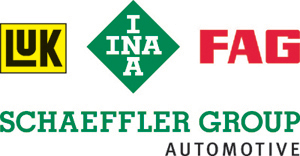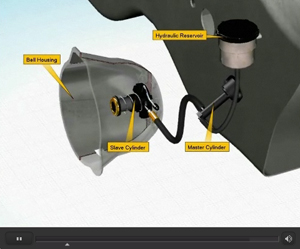 Many vehicles can develop release problems after a clutch change or replacement of the hydraulic release system components; usually consisting of a clutch master cylinder, slave cylinder and line.
Many vehicles can develop release problems after a clutch change or replacement of the hydraulic release system components; usually consisting of a clutch master cylinder, slave cylinder and line.
Conventional bleeding is usually done by opening the slave cylinder bleeder valve and either gravity bleeding or pumping the clutch pedal while opening and closing the slave bleeder valve.
Many new slave cylinders do not have a bleeder valve and must be reverse bled by simply filling the release system with hydraulic fluid and stroking the slave cylinder in and out several dozen times (slave must be lower than the master). This will force trapped air up and out of the vented master cylinder reservoir cap. Bleeder valve must be closed on slave cylinders that have them.

Ford Explorer, Ranger and Aerostar can really be hard to bleed because of the mounting position of the master cylinder. These applications respond very well to reverse bleeding if the master is first removed from the fire wall and leveled.
An animated version of reverse bleeding is available at lukclutch.com that should clear up any questions about reverse bleeding — especially those difficult Ford applications above.
Link to animated instructions:
http://bulletins.schaeffler-aftermarket.us/vidLib/lb171.phtml.













